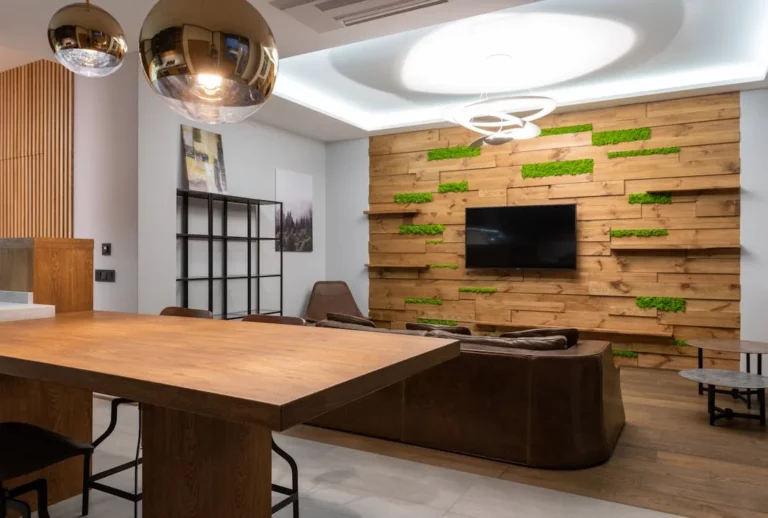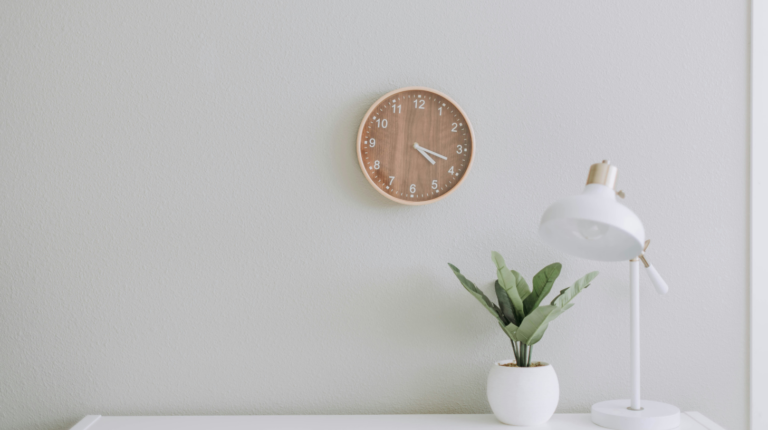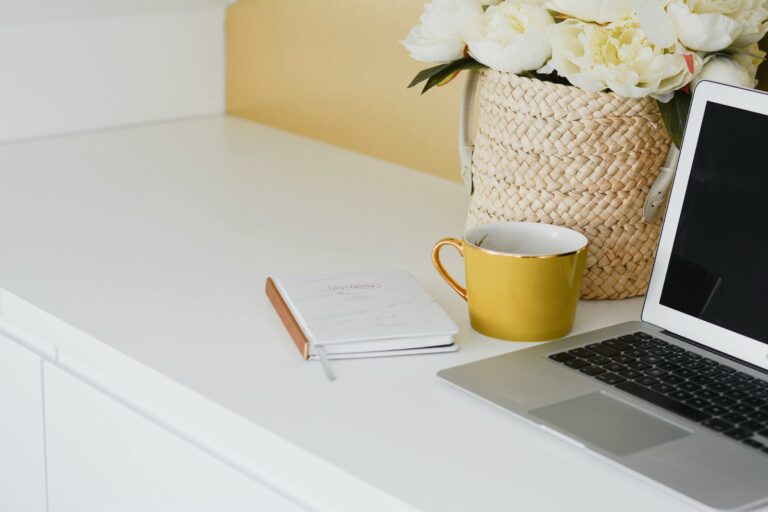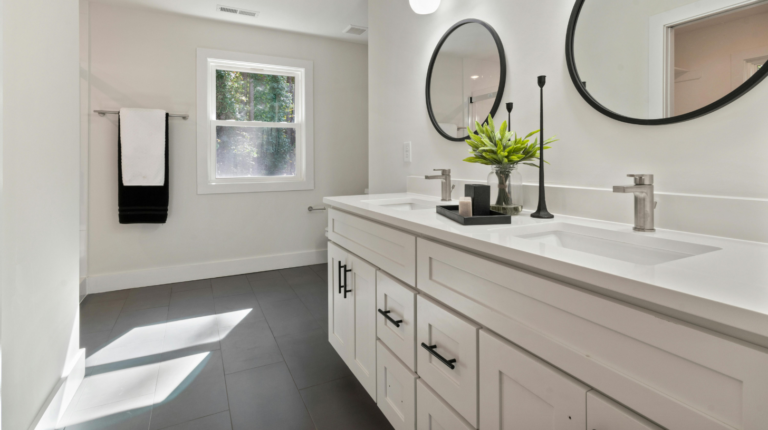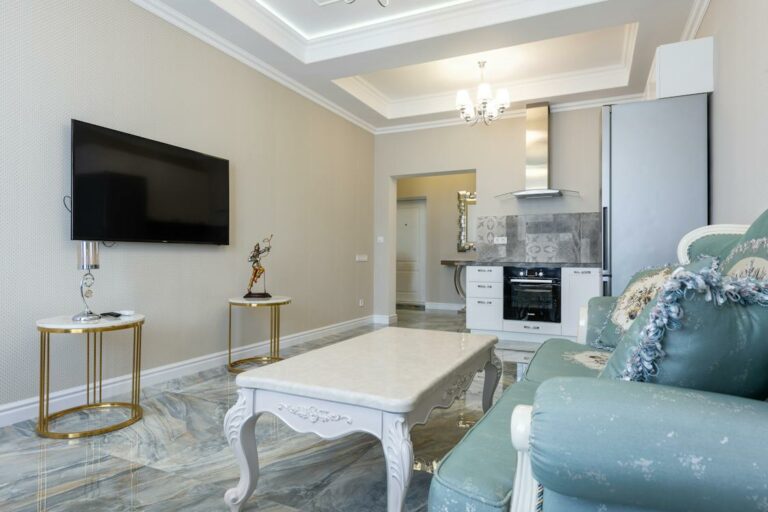The Dos and Don’ts of Home Decor : Common Mistakes to Avoid
Welcome to our guide on the dos and don’ts of home decor! Decorating your home can be an exciting and creative process, but it can also be overwhelming if you’re not sure where to start. Whether you’re moving into a new space or looking to refresh your current one, it’s important to avoid some common mistakes that can hinder your design efforts.
In this article, we’ll explore the dos and don’ts of home decor, providing you with valuable insights and practical tips to help you create a beautiful and functional living space. From understanding your style preferences to proper furniture placement and budgeting, we’ll cover all the essential aspects of home decor. So, grab a cup of coffee and let’s dive in!
Table of Contents
Dos of Home Decor

When it comes to home decor, there are certain dos and don’ts that can help you create a beautiful and functional space. In this article, we will focus on the dos of home decor, providing you with expert tips and advice to elevate your home’s aesthetics. Let’s dive in!
Understanding Your Style and Preferences
- Do take the time to understand your personal style and preferences. Consider what colors, patterns, and themes resonate with you.
- Do research and gather inspiration from various sources such as magazines, online platforms, and social media. Create a mood board or Pinterest board to visualize your ideas.
- Do consider the overall style of your home. If you have a traditional home, incorporating modern decor might not create a cohesive look. Try to strike a balance between your personal style and the existing architectural elements of your home.
Planning and Measuring
- Do plan your decor layout before making any purchases. Consider the size and layout of each room and make a list of what you need for each space.
- Do measure the dimensions of your room, furniture pieces, and other elements like windows and doors. Ensure that you have accurate measurements to avoid buying items that are too big or too small for your space.
- Do create a floor plan to visualize how your furniture and decor will fit into the room. This will help you determine the best layout for optimal flow and functionality.
Choosing the Right Color Scheme

- Do choose a color scheme that reflects the mood and ambiance you want to create in each room. Consider the natural lighting, existing furniture, and the purpose of the space.
- Do use a color palette that complements each other. You can choose a monochromatic scheme with different shades of the same color or opt for complementary colors for a bold and vibrant look.
- Do consider the psychological effects of colors. For example, blue is often associated with calmness and relaxation, while yellow can evoke feelings of happiness and energy. Choose colors that align with the purpose of the room.
Focus on Lighting
- Do prioritize lighting in your decor plan. Lighting can greatly affect the mood and functionality of a space.
- Do incorporate a combination of ambient, task, and accent lighting. This will ensure that you have the right level of lighting for various activities and create a layered and dynamic look.
- Do consider natural light and how it interacts with your decor. Arrange furniture and window treatments to take advantage of natural light while also providing privacy and protection from glare.
Mixing Patterns and Textures
- Do have fun with patterns and textures, but be mindful of creating a cohesive look. Mix patterns like stripes, florals, and geometric prints, but ensure they share at least one common color.
- Do consider the scale and proportion of patterns. Mix larger patterns with smaller ones for balance.
- Do incorporate different textures to add depth and visual interest to a space. Mix materials like wood, metal, glass, and fabric to create a tactile experience.
Investing in Quality Furniture

- Do invest in quality furniture pieces that are not only aesthetically pleasing but also durable and functional.
- Do prioritize comfort when choosing seating, especially for pieces like sofas and chairs that will be used frequently.
- Do consider the longevity of the furniture. Choose timeless pieces that won’t go out of style quickly, allowing you to enjoy them for years to come.
By following these dos of home decor, you can create a space that reflects your personal style, enhances the functionality of each room, and brings joy to your everyday life. Stay tuned for the next section where we will explore the don’ts of home decor and common mistakes to avoid.
Don’ts of Home Decor

When it comes to home decor, there are some common mistakes that beginners often make. By knowing what not to do, you can avoid these pitfalls and create a beautiful and functional space that reflects your personal style. Here are some important “don’ts” to keep in mind:
Ignoring Functionality
One of the biggest mistakes in home decor is prioritizing aesthetics over functionality. While it’s important for your space to look beautiful, it should also be practical and serve its purpose. Make sure to consider how you will be using each room and choose furniture and accessories accordingly. Avoid sacrificing comfort and usability for the sake of style.
Overcrowding with Furniture
Many people make the mistake of overcrowding their rooms with too much furniture. This can make the space feel cramped and claustrophobic. Instead, opt for minimalism and only include furniture that is necessary and adds value to the room. Leave enough space to move around comfortably and let the room breathe.
Choosing Trendy Over Timeless
Trends come and go, but timeless design never goes out of style. Avoid falling into the trap of solely following current trends as they may become outdated quickly. Instead, focus on creating a timeless and classic look that will withstand the test of time. Incorporate trendy elements in smaller and more affordable ways, such as with accessories or accent pieces.
Ignoring the Importance of Scale
Scale is a crucial aspect of home decor that is often overlooked. It refers to how the size of furniture and accessories relates to the size of the room. Avoid using items that are too big or too small for your space, as it can throw off the balance and make the room feel awkward. Take measurements and consider the proportions before making any purchases.
Neglecting Wall Art and Decor
Blank walls can make a room feel incomplete and uninspiring. Don’t make the mistake of neglecting your walls when it comes to decor. Hang artwork, mirrors, and other decorative items that reflect your personal style and enhance the ambiance of the room. Don’t be afraid to mix different types of wall decor for added interest.
Using Poor Quality Materials
Investing in quality materials is essential for long-lasting and durable home decor. Avoid the temptation of buying cheap and low-quality furniture, fabrics, and accessories. While they might save you money in the short term, they won’t stand the test of time. Choose furniture and materials that are well-made and built to last.
By keeping these “don’ts” in mind, you can avoid common mistakes in home decor and create a space that is beautiful, functional, and timeless. Remember to prioritize functionality, avoid overcrowding, choose timeless over trendy, consider scale, pay attention to wall decor, and invest in quality materials. Your home will thank you for it!
Home Decor Common Mistakes to Avoid

When it comes to home decor, there are certain mistakes that many people make without even realizing it. To help you create a beautiful and functional space, here are some common mistakes to avoid:
- Proper Furniture Placement: One of the biggest mistakes people make is placing furniture haphazardly in a room. Make sure to leave enough space to move around and consider the flow of traffic. Arrange furniture in a way that promotes conversation and creates a cozy atmosphere.
- Creating a Balanced Room Layout: Achieving balance in a room is crucial for a visually pleasing space. Avoid placing all the furniture on one side of the room or overcrowding one area. Distribute the furniture evenly to create a harmonious and inviting environment.
- Proper Rug Placement: Rugs add warmth and texture to a room, but placing them incorrectly can throw off the entire look. Avoid placing a small rug in a large room, as it will make the space feel disjointed. Instead, opt for a rug that is large enough to anchor the furniture and create a cohesive look.
- Avoiding Clutter: Clutter can make even the most well-designed room feel chaotic and uninviting. Avoid clutter by keeping surfaces clean and organized. Invest in storage solutions like baskets and shelves to keep belongings out of sight.
- Avoiding Excessive Matching: While having matching furniture sets can be tempting, it often leads to a lack of visual interest in a room. Mix and match different furniture pieces to create a more eclectic and personalized look. This will add depth and character to your space.
Remember, it’s important to trust your instincts and go with what makes you happy. Experiment with different layouts and styles until you find what works best for you. Home decor is all about reflecting your personality and creating a space that you love coming back to.
“Home decor is all about reflecting your personality and creating a space that you love coming back to.”
In the next section, we will discuss the importance of budgeting and planning when it comes to home decor.
Importance of Budgeting and Planning

When it comes to home decor, one of the most important aspects to consider is budgeting and planning. This step is often overlooked or underestimated, but it plays a crucial role in ensuring that your home decor project is a success. Budgeting and planning can help you make informed decisions, stay organized, and prevent unnecessary expenses. Here are some key reasons why budgeting and planning are essential for home decor:
Setting a Realistic Budget
One of the first steps in any home decor project is to set a budget. This will help you determine how much you’re willing to spend on different items such as furniture, paint, accessories, and renovations. By setting a realistic budget, you can avoid overspending and ensure that you have enough funds to complete your project without compromising on quality or style. Be sure to consider both the initial costs and any ongoing maintenance expenses.
Planning Ahead for Renovations
If your home decor plans involve renovations or major changes to your space, proper planning is crucial. Take the time to assess your needs and determine which areas require the most attention. Consider factors such as functionality, layout, and any structural modifications that may be needed. Planning ahead will help you create a clear roadmap for your project, including timelines and milestones. It will also allow you to make any necessary arrangements, such as hiring contractors or obtaining permits, well in advance.
Prioritizing Essential Items
Not everything in your home decor project will have the same level of importance or urgency. It’s important to prioritize essential items and allocate your budget accordingly.For example, if you’re working on a living room makeover, investing in a comfortable and durable sofa would be a higher priority than buying decorative throw pillows. By identifying and focusing on the key elements that will greatly impact the functionality and aesthetics of your space, you can ensure that your budget is well-spent.
Researching and Comparing Prices
Another benefit of budgeting and planning is that it allows you to research and compare prices before making purchasing decisions. Take the time to shop around, both online and in-store, to find the best deals and discounts. Look for sales, promotions, and clearance items that can help you save money without compromising on quality. By being well-informed about the market, you can make smart choices and get the most value out of your budget.
Remember, while budgeting and planning are important, they should not limit your creativity or enjoyment of the home decor process. Use these tools as a guide to help you make informed decisions and stay on track. With a well-planned budget, you can transform your space into a beautiful and functional haven without breaking the bank.
Creating a Cohesive Style
When it comes to home decor, creating a cohesive style is essential for achieving a harmonious and visually appealing space. A cohesive style helps tie all the elements of your decor together, creating a unified and seamless look. Here are some tips to help you create a cohesive style in your home:
Using a Design Theme or Concept
- Choose a design theme or concept that resonates with your personal style and preferences. Whether it’s modern, rustic, bohemian, or minimalist, having a clear theme in mind will guide your design choices and create a cohesive look.
- Incorporate elements that are consistent with your chosen theme throughout your space. This could be through furniture choices, color schemes, or decorative accents.
- Don’t be afraid to mix styles within your chosen theme. For example, you can blend modern furniture with vintage accessories for an eclectic look that still maintains a cohesive overall style.
Balancing Color and Pattern
- Select a color palette that complements your chosen design theme. Consider the mood you want to create in each room and how different colors can affect the overall ambiance.
- Use colors strategically throughout your space to create balance and visual interest. You can achieve this through a mix of bold statement colors and subtle neutrals.
- Incorporate patterns thoughtfully to add visual texture and depth to your decor. Mix patterns in different scales, such as large-scale patterns with smaller-scale ones, to create a balanced and cohesive look.
Considering Proportions and Scale
- Pay attention to the proportions and scale of furniture and accessories in your space. Make sure they are appropriately sized for your room to create a harmonious and balanced composition.
- Choose furniture that is proportional to the size of the room. For example, in a small living room, opt for a cozy loveseat instead of a large sectional.
- Consider the scale of patterns and textures as well. Mix different scales to create visual interest, but make sure they don’t overpower each other.
Remember, creating a cohesive style in your home decor is about finding a balance between different elements while staying true to your personal style. With these tips in mind, you can transform your space into a beautifully harmonious and visually appealing haven.
Accessorizing and Adding Finishing Touches
When it comes to home decor, the accessories and finishing touches play a crucial role in pulling the whole look together. These small details can make a big impact and add personality to your space. Here are some dos and don’ts to keep in mind when accessorizing your home:
Choosing the Right Accessories
- Do: Select accessories that complement your overall design style and color scheme. Look for pieces that add visual interest and enhance the overall aesthetic of the room.
- Don’t: Overcrowd your space with too many accessories. Remember, less is often more. Choose a few statement pieces that will stand out rather than cluttering the room with too many smaller items.
Adding Plants and Greenery

- Do: Incorporate plants and greenery into your decor. Not only do they add a fresh and vibrant touch to your space, but they also have numerous health benefits. They can purify the air, reduce stress, and create a calming atmosphere.
- Don’t: Neglect the maintenance of your plants. Make sure to water them regularly and provide them with the right amount of sunlight. If you’re not blessed with a green thumb, consider low-maintenance plants like succulents or artificial plants that still add a touch of greenery to your space.
Incorporating Personal Touches
- Do: Display personal items such as family photos, meaningful artwork, or cherished mementos. Adding personal touches will make your space feel unique and reflect your personality.
- Don’t: Go overboard with personal items. Too many can make a space feel cluttered and unorganized. Choose a few key items that hold sentimental value and incorporate them strategically throughout the room.
Selecting Proper Window Treatments
- Do: Choose window treatments that not only add style but also serve a functional purpose. Consider factors such as privacy, light control, and insulation when selecting curtains or blinds.
- Don’t: Neglect the importance of properly fitting window treatments. Ill-fitting or unevenly hung curtains can detract from the overall look of the room. Make sure to measure your windows accurately and choose treatments that fit properly.
By paying attention to these dos and don’ts of accessorizing and adding finishing touches, you can elevate the overall aesthetic of your home. Remember, these small details can make a big difference in creating a space that is both visually appealing and reflective of your personal style.
Maintenance and Regular Updates
Maintaining and updating your home decor is an essential part of keeping your space looking fresh and inviting. Regular upkeep not only enhances the longevity of your furniture and decor, but it also ensures that your style remains current and reflects your evolving tastes. Here are some important tips for maintenance and regular updates to keep your home decor looking its best:
-
- Regular Cleaning and Maintenance: Dusting, vacuuming, and spot-cleaning are key to maintaining the cleanliness and condition of your furniture and decor. Regular cleaning prevents dirt and grime from accumulating and reduces the risk of stains and damage. Make sure to follow the manufacturer’s guidelines for cleaning specific materials and surfaces to avoid any mishaps.
- Updating Decor Over Time: As your style preferences change and new trends emerge, it’s important to update your home decor to keep up with the times. This doesn’t mean you have to completely overhaul your space every few years, but rather make small updates that can make a big impact. Here are a few ideas:
- Swap out throw pillows and cushions: Changing the pillows on your sofa or bed can instantly refresh the look of a room. Experiment with different colors, patterns, and textures to create a new focal point or add visual interest.
- Rearrange furniture: Sometimes, simply rearranging your furniture can give a room a whole new look and feel. Move pieces around, try different layouts, and consider the flow and functionality of the space. You may discover a more efficient arrangement or a new way to showcase your favorite pieces.
- Update wall art and decor: Change up the artwork and accessories on your walls to add a fresh vibe to your space. Consider swapping out pictures, adding new frames, or hanging a statement mirror to create a focal point and reflect light.
- Refresh paint or wallpaper: If you’re up for a bigger project, consider repainting a room or adding a new wallpaper to instantly transform the space. A fresh coat of paint can breathe new life into tired walls and give the room a renewed sense of energy.
Remember, regular maintenance and updates are about keeping your home decor exciting and reflective of your personality. Don’t be afraid to experiment, try new things, and make changes that make you feel happy and comfortable in your space. Happy decorating!
“There is no such thing as constant decor. While the basics of design might stay the same, your tastes and preferences are bound to change over time. Update your decor regularly to reflect your evolving style and keep your space feeling fresh.”
Conclusion
In conclusion, creating a well-designed and functional home requires careful planning and consideration. By following the dos and avoiding the don’ts of home decor, you can ensure that your space reflects your style and meets your needs.
Remember, understanding your style and preferences is the first step in creating a cohesive and inviting space. Take the time to plan and measure your room to ensure that furniture fits properly and flows well. Choose a color scheme that complements your style and adds visual interest.
Don’t forget the importance of lighting in setting the mood and functionality of your space. Mix patterns and textures to add depth and personality to your rooms, and invest in quality furniture that will stand the test of time.
When it comes to the don’ts of home decor, avoid overcrowding with furniture and prioritize functionality. Choose timeless pieces over trendy ones, and pay attention to scale and proportion. Don’t neglect the impact of wall art and decor, and opt for high-quality materials that will last.
To avoid common mistakes, properly place furniture, create a balanced room layout, and ensure that rugs are placed correctly. Avoid clutter and excessive matching, which can make a space feel overwhelming and visually uninteresting.
Budgeting and planning are essential in home decor. Set a realistic budget and plan ahead for any renovations. Prioritize essential items and research and compare prices to make the most of your budget.
Creating a cohesive style involves using a design theme or concept, balancing color and pattern, and considering proportions and scale. These elements will help tie your space together and create a harmonious look.
When it comes to accessorizing and adding finishing touches, choose the right accessories, incorporate plants and greenery, and add personal touches that reflect your personality. Select proper window treatments to enhance privacy and light control.
Lastly, maintenance and regular updates are necessary to keep your home looking its best. Regular cleaning and maintenance will prevent wear and tear, and updating decor over time will keep your space fresh and up-to-date.
By following these tips and avoiding common mistakes, you can create a home that is stylish, functional, and uniquely yours. With proper planning and attention to detail, you can transform your space into a haven that brings you joy and comfort for years to come. Happy decorating!
Frequently Asked Questions
-
-
- What are some common home decor mistakes to avoid?Some common home decor mistakes to avoid include: 1. Overcrowding the space, 2. Ignoring proper lighting, 3. Poor furniture placement, 4. Choosing the wrong color scheme, and 5. Neglecting to add personal touches.
- How can I avoid overcrowding the space in my home decor?To avoid overcrowding, declutter your space by getting rid of unnecessary items. Also, consider the scale and proportion of furniture and decor pieces to ensure they fit harmoniously in the room.
- What is the importance of proper lighting in home decor?Proper lighting is crucial in home decor as it sets the mood, enhances visibility, and highlights key features in a space. Make use of different types of lighting, such as ambient, task, and accent lighting, to create a well-balanced and inviting atmosphere.
- How can I improve furniture placement in my home?To improve furniture placement, ensure that there is enough space for movement and that furniture is arranged in a way that promotes conversation and functionality. Consider the traffic flow and focal points in the room when positioning furniture.
- What are some tips for choosing the right color scheme in home decor?When choosing a color scheme, consider the overall theme and mood you want to achieve. Use a color wheel to select complementary or analogous colors, and take into account the natural lighting in the space. Test paint swatches and fabric samples before committing to a color.
-


